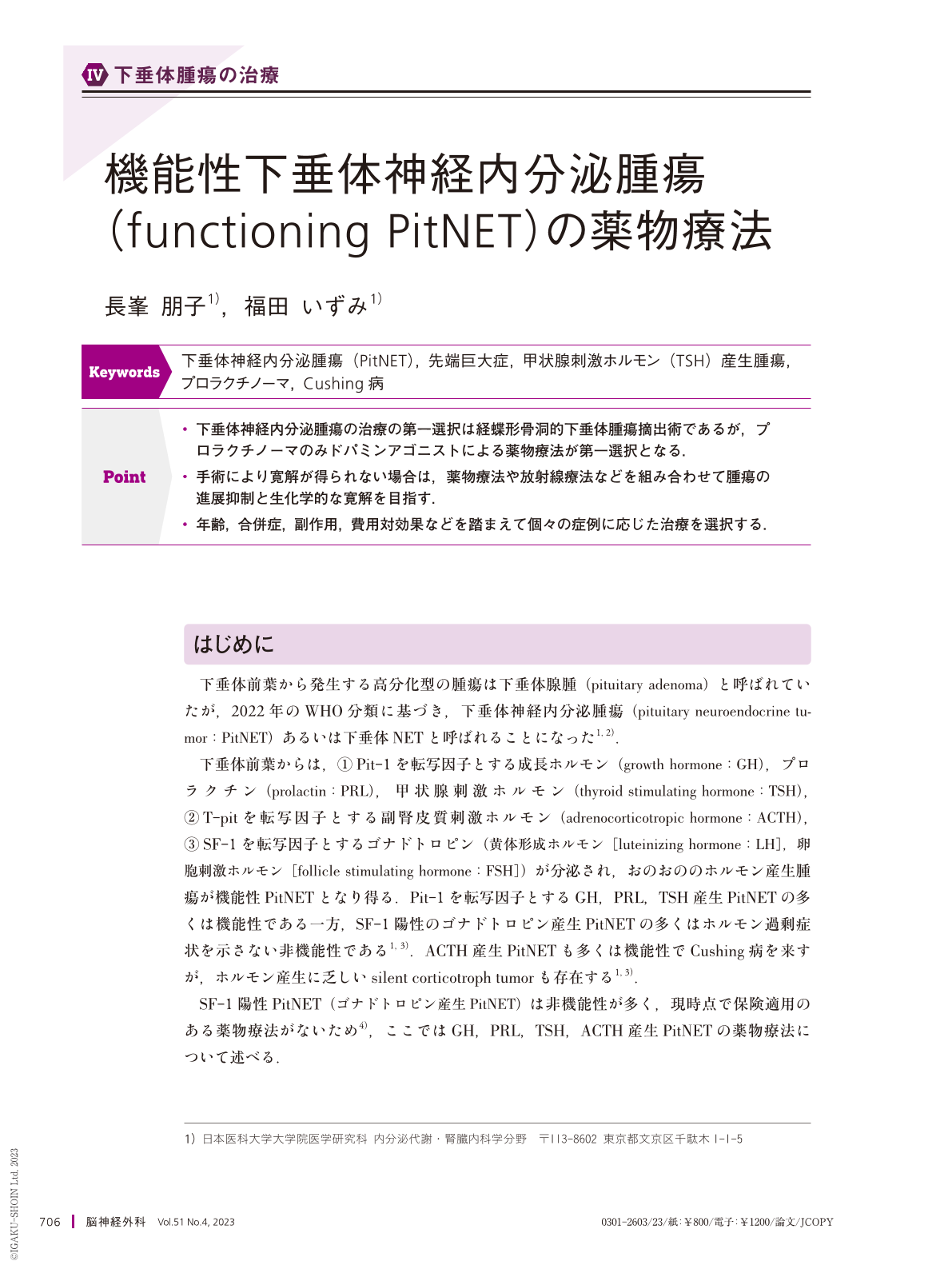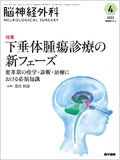Japanese
English
- 有料閲覧
- Abstract 文献概要
- 1ページ目 Look Inside
- 参考文献 Reference
Point
・下垂体神経内分泌腫瘍の治療の第一選択は経蝶形骨洞的下垂体腫瘍摘出術であるが,プロラクチノーマのみドパミンアゴニストによる薬物療法が第一選択となる.
・手術により寛解が得られない場合は,薬物療法や放射線療法などを組み合わせて腫瘍の進展抑制と生化学的な寛解を目指す.
・年齢,合併症,副作用,費用対効果などを踏まえて個々の症例に応じた治療を選択する.
Transsphenoidal surgery is the first-line treatment for most functioning pituitary neuroendocrine tumors(PitNETs). Medical therapies are usually chosen for patients with residual or refractory tumors after surgery or contraindications to surgery. Dopamine agonists(DA)are the first-line treatment for prolactinomas. Somatostatin analogs are the first line of therapy for GH- and TSH-producing PitNETs. In severe hypercortisolemia due to ACTH-producing PitNETs, adrenal enzyme inhibitors such as 11β-hydroxylase inhibitors should be started immediately, as marked hypercortisolemia leads to serious opportunistic infections. Pasireotide and DA are usually administered to treat mild hypercortisolemia. Based on the histological pattern of secretory granules, somatotroph, lactotroph, and corticotroph tumors can be divided into two subtypes: densely granulated and sparsely granulated.
Densely granulated lactotroph tumors tend to be resistant to DA. In contrast, densely granulated somatotroph and corticotroph tumors express high levels of somatostatin receptors and are more responsive to somatostatin analogs. Since ACTH-producing PitNETs express SSTR5 without SSTR2, the second-generation somatostatin analog, pasireotide, is effective against ACTH-producing PitNETs.

Copyright © 2023, Igaku-Shoin Ltd. All rights reserved.


